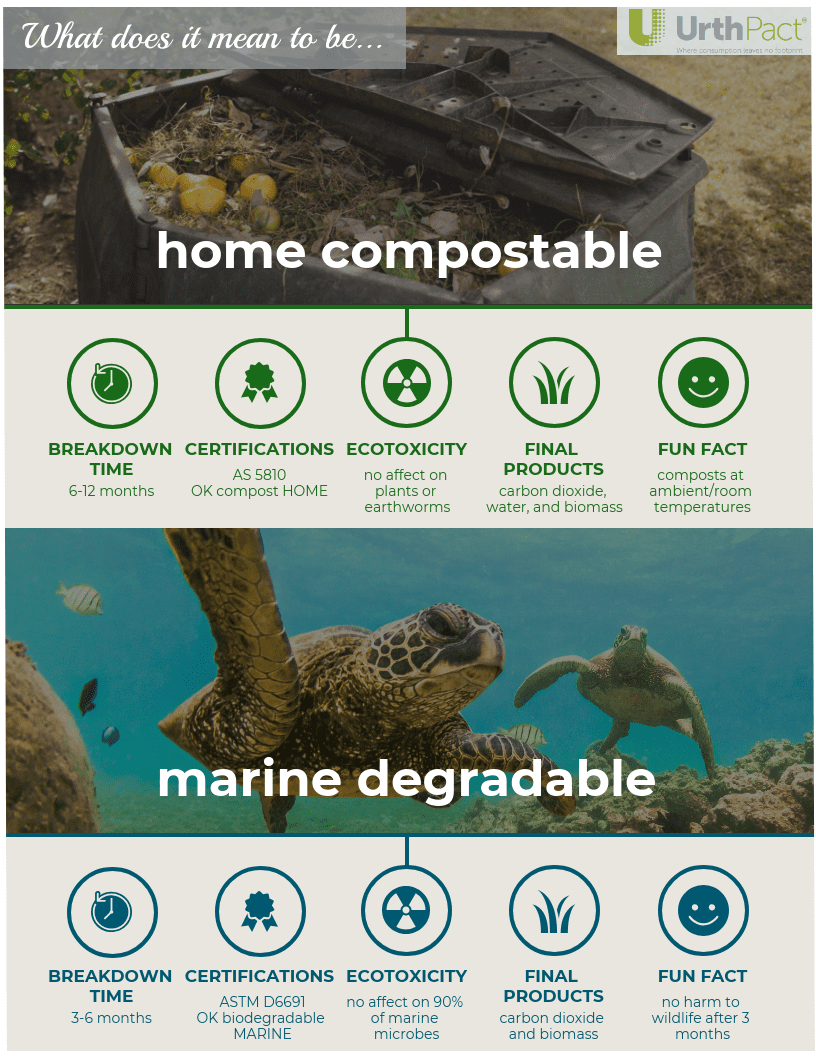Drinking in the Marine-Degradable and Home Compostable Straw Solution

Today, brands are searching for ways to stand out from the crowd. At the same time, consumers are shopping as much with their conscience as they are with their cash. Brands that can help support causes such as environmental protection can not only attract and retain new businesses; they can also make a difference at the same time. One way that companies can take a leading role and differentiate themselves from the competition is by adopting home-compostable and marine-degradable straws.
Eight million tons of plastic waste flows into oceans annually. One piece of waste that has garnered a lot of media attention is plastic straws. Straws are a huge business in the United States, with an estimated 500 million used daily. Along with plastic bags, plastic straws have become a co-star in a movement of daily things the public can do to help the environment. In some locations, this movement has led to greatly reduced usage and even legal bans on single-use products.
As consumers look to reduce their impact on the planet, they are exploring alternatives to traditional plastic straws including paper, metal, avocado, bamboo, and everything in between. But each of those has its own issues. Paper can get mushy quickly frustrating consumers. Metal straws can alter the taste of the drink and are difficult to clean, and so on. Despite these more traditional alternatives making inroads, many are still searching for something Earth-friendly and consumer-friendly for brands to offer their current customers and attract new ones.
There are innovative alternatives coming to light in home-compostable and marine-degradable bioplastics, that will fill the need of both brands and consumers. These materials maintain the properties of plastic straws but will biodegrade completely in less than a year.
So, what exactly are home-compostable and marine-degradable bioplastic straws? While the science can be a bit daunting, here is a breakdown of how it happens and how it can help the Earth, and your brand.
By Land
Home composting of organic matter such as food and yard waste is familiar to many consumers, especially the growing numbers that are living a more environmentally conscious lifestyle. Compostable bioplastics, in particular, are taking hold and attracting consumers, as they take the planet into consideration while delivering the convenience and consistency of traditional plastics.
Bioplastic products claiming home compostability will completely biodegrade in under a year in any compost environment, whether it’s backyard or industrial. Any product that is compostable should have a stamp of approval from the most widely used international standard called AS 5810 —which defines test methods— paired with TUV’s OK compost HOME, which defines criteria. In a nutshell, [which is compostable too, although slower than many other organic materials] to pass the rigorous and gold-standard certification, the entire two-step process of physical and chemical breakdown needs to be completed in 12 months. The entire process also must occur without negatively affecting plant germination, growth, or earthworms in the ecosystem. Comparably, traditional plastics can take up to 1,000 years to degrade. This process simply breaks them down into smaller and smaller pieces called microplastics, never actually completely degrading, so they continue to impact the ecosystem for a Millenium.
By Sea
Composting works on land. But what about the oceans, where in recent years awareness of plastic waste from straws and other commonly used on-the go-products has skyrocketed, due to its negative impact on marine life? Marine-degradable bioplastics are an up-and-coming technology that will soon be making waves around the world. The certifications for marine degradability are again two-fold: an international standard ASTM D6691 defines testing methods, while TUV’s OK biodegradable MARINE defines criteria. In order to earn their stamps of approval, a material must disintegrate into pieces smaller than 2mm in just 3 months. Unlike a traditional plastic straw that can float in the ocean for centuries, a marine-degradable straw is no longer a threat to marine life a mere 84 days after accidentally entering the ocean. And complete biodegradation to CO2 and biomass takes only 6 months.
Beyond just the physical product itself, it is required that the degradation process has absolutely no impact on at least 90% of test organisms, so there is little to no accidental harm on the ecosystem. In comparison, traditional plastics only break into microplastics, which make up 85% of the plastic waste in our oceans and on our beaches and leach antioxidants, flame retardants, and antimicrobial agents into the oceans, which can also be extremely harmful if ingested by marine life.
Riding the Wave
Home compost in one year vs. microplastics in 1,000 years. Marine degradation in six months vs. microplastics in 500 years. Consumers are searching for these alternatives to avoid stuffing landfills with traditional plastic products. Select companies are already working to bring home-compostable and marine-degradable straws to market in early 2020. And they’re ahead of the curve. The bans on single-use plastics in different areas worldwide have started, and they’re not stopping anytime soon. Plus, there are more consumers looking to make a difference with or without governmental bans, and companies such as Starbucks are joining them in eliminating traditional plastic, single-use straws. This is also a growing and relatively untapped market that brands can capture by offering these eco-friendly straw alternatives.
Consumers are driving change. They are choosing products that won’t only serve their needs, but the Earth’s needs as well. Companies that can provide consumer-friendly and Earth-friendly products will stand out from the crowd while also doing their part to protect the planet.